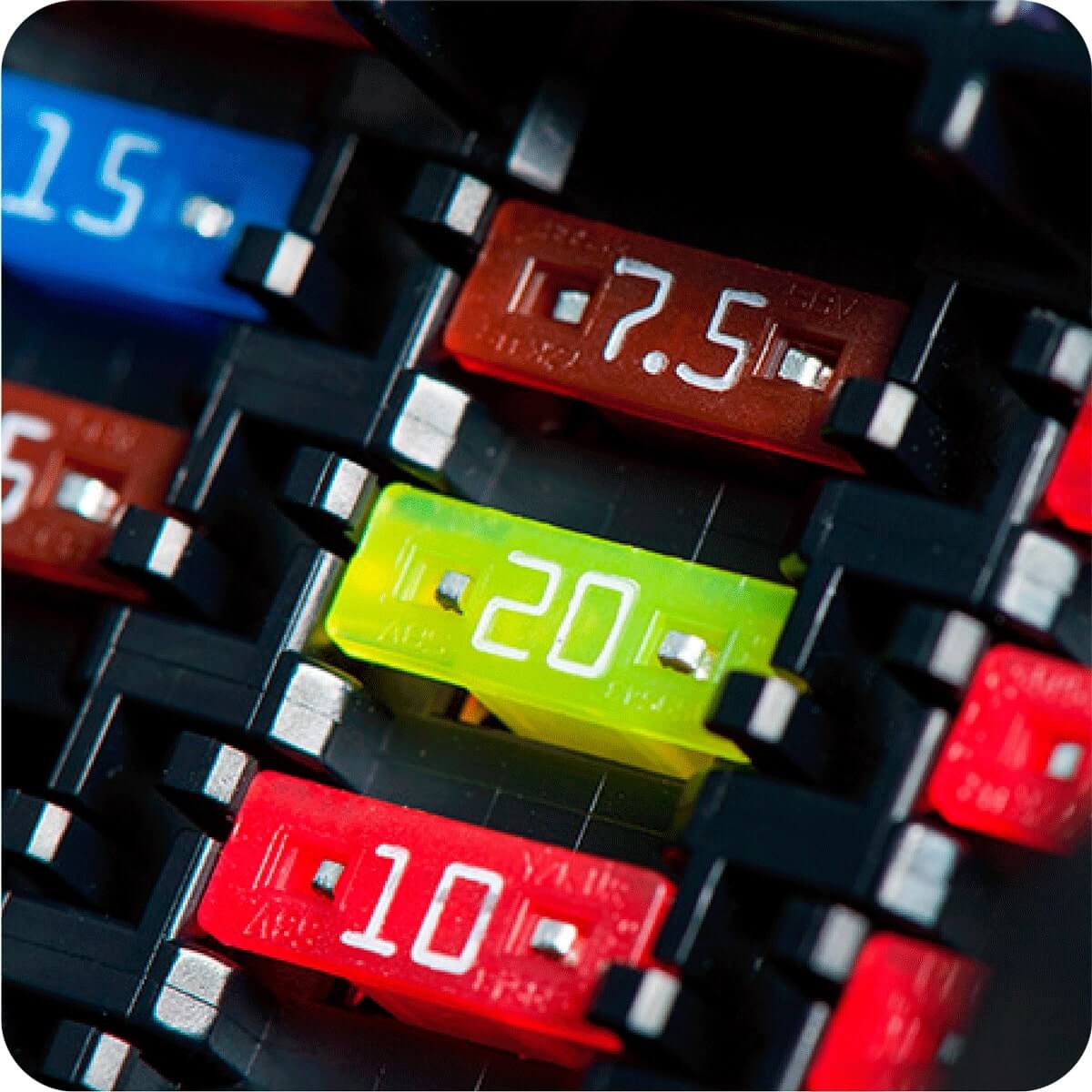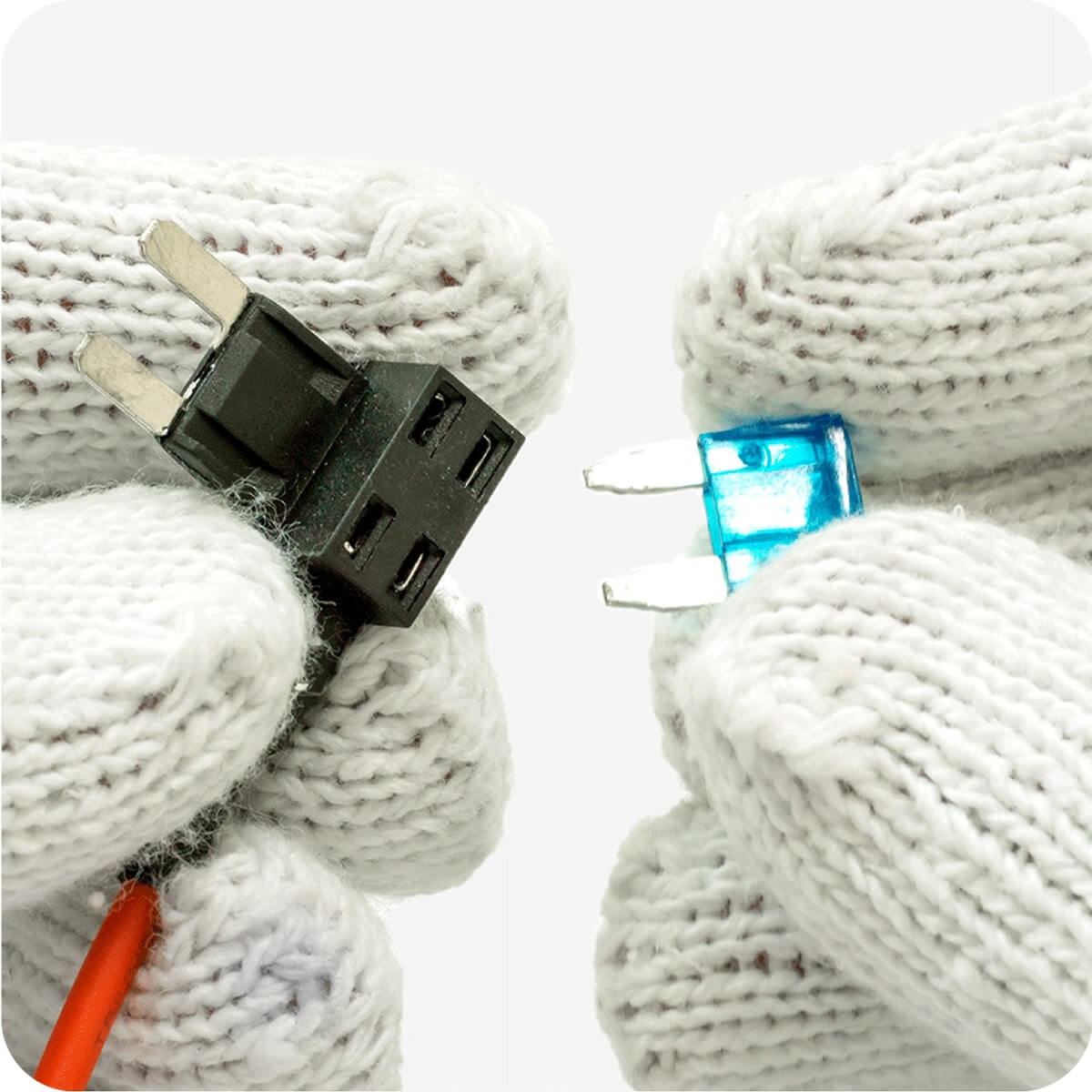Thermal circuit breakers manufacturer and distributor
Discover our selection of thermal circuit breakers
Thermal circuit breakers: everything you need to know about
Thermal circuit breakers protect electrical circuits by detecting excess current caused by overcurrents, using heat generation as a trigger. When the current exceeds the breaker's rating, a bimetallic strip heats up and bends, causing the breaker to trip and open the circuit. After cooling, the breaker can be reset. As heat is the key factor in tripping the breaker, ambient temperatures should be considered when selecting the correct size.
For specific application questions, consult an OptiFuse sales representative.
Line voltage circuit breakers applications
Line Voltage:
The "Line Voltage" part of the name means that these circuit breakers operate at 125VAC or 250VAC (or below) and are commonly used for applications connected to utility power with high current requirements. Typical applications include vending machines, industrial controls, factory automation, telecom equipment, and motor home appliances. These breakers provide reliable protection for systems plugged into standard electrical grids, ensuring safety in high-current environments.
Marine:
In marine environments, thermal circuit breakers are typically found on boat panels, often equipped with a waterproof boot for moisture protection. They protect onboard electrical systems such as navigation, lighting, and auxiliary power circuits from overcurrents. Rated at 32VDC and offering UL 1500 Ignition Protection, they are ideal for marine-grade applications. These breakers can also be conveniently installed in new fuse blocks, providing a secure and space-efficient solution for marine electronics.
FAQs
What type of protection do OptiFuse line voltage circuit breakers offer?
OptiFuse line voltage circuit breakers offer thermal protection but not magnetic protection. This means they protect against overloads, where excess current over time causes heat buildup, but they do not provide short-circuit protection.
Since they fall under the UL 1077 standard, they are classified as supplementary protectors, designed to protect individual equipment or components rather than providing full branch circuit protection (which would require UL 489 certification).
For comprehensive protection, OptiFuse line voltage circuit breakers must be used alongside a fuse or a UL 489-rated circuit breaker for short-circuit protection.
How is a line voltage circuit breaker installed?
Line voltage circuit breakers are designed for panel mounting, providing easy access to the reset button while concealing all wiring. Connections are made under the panel using either quick connect or screw connect terminals, depending on the model. This installation method ensures a clean appearance and enhances safety by keeping wiring hidden.
Is it safe to reset a tripped breaker?
Yes, it is generally safe to reset a tripped breaker, as they often trip due to overloads, like too many devices plugged into one outlet. However, you should first identify and address the cause of the trip. Inspect the circuit for any damage, such as burnt outlets or wiring; if you notice anything unusual, do not reset the breaker. Consistently tripping breakers indicate a persistent issue that needs to be identified and resolved as soon as possible.
Why does my breaker trips instantly?
If your breaker continually trips as soon as you reset it, two possibilities may be at play:
- Your breaker may be old and in need of replacement. Over time, the bimetal strip degrades, causing it to trip faster than before. Alternatively, the breaker may not be adequately rated for the application, and a higher-rated circuit breaker might be necessary.
- There may be a fault in the circuit causing excessive current to be drawn, leading to repeated tripping. In this case, turn off the power and identify and remove the fault before the breaker will stop tripping. Here, the breaker is functioning properly and does not need replacement.
Why does my breaker keep tripping with nothing plugged in?
If your breaker keeps tripping even when nothing is plugged in, it may be due to the following reasons:
Ground Fault: There may be a ground fault within your circuit, which occurs when a live wire makes contact with a grounded part. This is a dangerous situation; if this happens, turn off the power immediately and inspect the circuit to find and remove the fault.
Short Circuit: A short circuit could be present somewhere in your system, which is also dangerous. You must turn off your system and identify the issue before resetting your circuit.
Wiring Issues: Damaged, frayed, or improperly connected wires can create a short circuit or ground fault, causing the breaker to trip.
Faulty Breaker: It is possible that you have a faulty circuit breaker. In this case, you will need to replace the circuit breaker with a new one.
Moisture or Corrosion: Moisture or corrosion in the electrical box or on the wiring can create unintended connections that lead to tripping.
Shared Circuits: If the circuit is shared with another device that is active elsewhere, it could still draw enough current to trip the breaker.
If you are unable to identify and fix the issue, please consult an electrical professional to ensure that your circuit is safe.
See also

Fuses
Many styles of innovative, versatile fuses are available to protect circuits from dangerous overcurrents in automotive, electronic, and industrial applications.

Fuse Holders, Blocks and Accessories
Installing circuit protection is easy with our wide variety of customizable fuse holders, sturdy fuse blocks, and compact fuse clips.